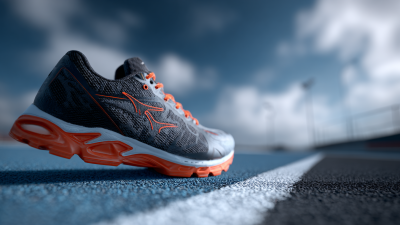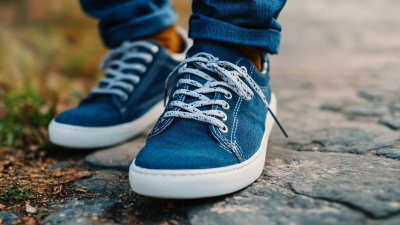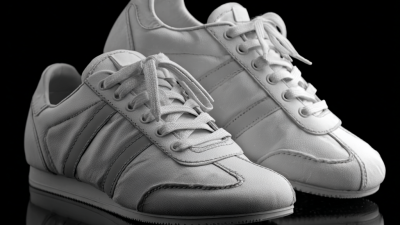
In recent years, the realm of athletic footwear has witnessed a remarkable transformation, particularly in the category of women sports shoes. As more female athletes and fitness enthusiasts pursue excellence in their respective disciplines, the demand for innovations that enhance performance and comfort has surged. This shift has prompted brands to rethink their designs, integrating cutting-edge technology and materials tailored specifically to the unique needs of women.

The advancements in women sports shoes not only cater to the physical demands of various sports but also prioritize the comfort and support that female athletes require. From improved cushioning systems to adaptive fits and breathable materials, these innovations are designed to empower women on and off the field.
As we delve into the top five innovations, we will explore how each feature contributes to an enhanced athletic experience, allowing women to push their limits while enjoying the utmost comfort. Whether you're a seasoned professional or just starting your fitness journey, understanding these advancements is crucial in choosing the right footwear that will support your performance and overall well-being.
In the rapidly evolving world of women's sports shoes, revolutionary cushioning technologies play a pivotal role in enhancing both performance and comfort. Recent research highlights that effective cushioning can reduce impact forces by up to 30%, greatly minimizing the risk of injuries during high-impact activities. Brands are now integrating advanced materials like EVA foam, which offers superior energy return and durability, ensuring that athletes can train longer and harder without compromising their feet's well-being.
Additionally, innovative designs such as responsive gel inserts and air cushioning systems are gaining traction. According to a 2022 report by the Sports Industry Research Association, shoes equipped with adaptive cushioning technologies not only improve overall foot comfort but also contribute to increased athletic performance by providing the necessary support where it is most needed. This is particularly significant for female athletes, who have unique biomechanical differences that necessitate specialized footwear solutions. As brands continue to invest in R&D, the future of women's sports shoes looks promising, with the potential to transform athletic experiences through cutting-edge technology.
Adaptive fit systems in women’s sports shoes are transforming how athletes experience comfort and performance. These innovative technologies offer tailored adjustments that enhance the natural fit of the shoe, addressing the unique needs of women's feet. Recent advancements have introduced features such as self-lacing mechanisms and heat-moldable materials, allowing the footwear to conform perfectly to the wearer. This level of customization not only improves overall comfort but also helps to minimize the risk of injuries by ensuring proper support during training and competition.
Brands are increasingly focusing on developing stability and responsive cushioning systems in their women's sports shoes. The latest models combine cutting-edge technology with market-leading comfort, providing stability without adding unnecessary weight. Such innovations reflect a growing recognition of the importance of comfort in enhancing athletic performance. As women continue to take center stage in sports, these advancements in adaptive fit systems are vital in empowering them to perform at their best while enjoying a comfortable experience.
The evolution of women's sports shoes has seen a significant focus on
lightweight materials, which play a pivotal role in enhancing
athletic performance and comfort. According to a 2022 report by the
Sports & Fitness Industry Association, the demand for lightweight athletic footwear has surged
by 25% over the past five years, highlighting athletes' preferences for
shoes that allow for greater speed and agility without compromising
structural support. Modern innovations in materials, such as advanced synthetic meshes and foam technologies,
provide not only lightness but also breathability and
moisture-wicking properties, essential for prolonged use during rigorous activities.
Additionally, research from the Footwear Biomechanics Group
suggests that lightweight designs can reduce the energy cost of running by as much as
3-4%, allowing athletes to maintain peak performance over
longer distances. Brands like Nike and
Adidas have embraced these innovative materials to create shoes that
offer enhanced responsiveness and cushioning, tailored specifically for female athletes. By understanding
the unique biomechanics of women's feet, designers can craft footwear that maximizes both performance and
comfort, enabling female athletes to push their limits while minimizing the risk of injury.
In today's competitive sports environment, the significance of breathability and moisture control in women's sports shoes cannot be overstated. According to a report by the American Council on Exercise, improper moisture management can lead to discomfort, blisters, and even injuries during workouts. Thus, innovative materials and designs in women's athletic footwear are being developed to enhance performance while ensuring feet stay fresh during intense activities.
Modern sports shoes feature advanced mesh technologies and moisture-wicking materials that promote airflow and dissipate sweat. For instance, brands like Nike and Adidas have introduced shoes with engineered mesh uppers that allow for maximum breathability while providing adequate support. A study published in the Journal of Sports Sciences highlights that shoes with enhanced breathability can reduce foot temperature by up to 3°C, significantly improving comfort levels during workouts.
**Tips for Choosing the Right Shoes**: When selecting sports shoes, look for models with moisture-wicking linings and breathable uppers to keep your feet cool. Also, consider shoes with adaptive fit technologies that conform to your foot shape for added support. Lastly, remember to try shoes at the end of the day when your feet are slightly swollen to ensure a comfortable fit during workouts.
| Innovation | Description | Benefits | Materials Used | Target Activity |
|---|---|---|---|---|
| Mesh Upper Technology | Utilizes breathable mesh fabrics to enhance air circulation. | Keeps feet cool and dry during workouts. | Polyester, Nylon | Running, Training |
| Moisture-wicking Linings | Special linings that draw moisture away from the foot. | Prevents blisters and discomfort. | Polyester, Spandex | All sports activities |
| Adaptive Fit Technology | Dynamic upper materials that conform to the foot shape. | Enhances comfort and reduces pressure points. | Flexible Mesh, Synthetic Overlays | Walking, Running |
| Ventilation Chambers | Designed air pockets that improve ventilation within the shoe. | Reduces moisture buildup and odor. | EVA Foam, Rubber | High-intensity training |
| Antimicrobial Treatments | Coatings that prevent the growth of odor-causing bacteria. | Keeps shoes smelling fresh longer. | Specialized Chemicals | All sports activities |
Sustainability in design is becoming a focal point in the development of women's athletic footwear. With an increasing awareness of environmental issues, many brands are now prioritizing eco-friendly materials and sustainable manufacturing processes. Innovations like biodegradable fabrics and recycled materials are ensuring that shoes not only meet performance standards but also lessen their ecological footprint. Consumers are seeking options that align with their values, prompting brands to innovate towards greener solutions.
Tips: When looking for sustainable women's sports shoes, consider checking for certifications that indicate eco-friendliness, such as those that guarantee low environmental impact or use of recycled materials. Additionally, choose brands that are transparent about their production processes.
Moreover, the rise of 3D printing technology is revolutionizing sustainable shoe design. It allows for the creation of customized footwear with minimal waste, reducing the excess often associated with traditional manufacturing methods. This technology also enables brands to experiment with different materials, further enhancing the comfort and fit of women's sports shoes. By focusing on these innovations, the industry is poised to deliver not only high-performance footwear but also options that support a healthier planet.
Tips: Look for brands that incorporate 3D printing in their design process, as these shoes typically offer a more tailored fit while contributing to sustainability efforts.






